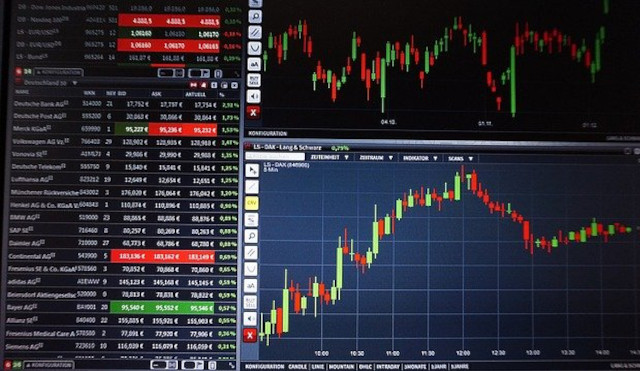Tax Filing
INCOME TAX FILING
Income from trading in shares and futures and options
Tax filing for income from trading in shares and futures and options
A taxpayer may have profits or losses from trading in shares or from trading in futures and options. In such cases, a taxpayer needs to understand how to report the profits or losses in their income tax returns. Let us discuss the method of calculating the profits or losses for income tax purposes and the appropriate ITR form for tax filing.
A taxpayer having income or loss from day trading or F&O cannot file ITR-1 or ITR-2. Such taxpayer needs to file ITR-3 or ITR-4.
Form ITR-3 is applicable to an individual or HUF who have income from business or profession and all other types of income. For example, a salaried employee can report income from salary, house property, capital gains, business income from trading and F&O, FD interest etc. A taxpayer can report both intra-day trades and F&O trades using ITR-3. Further, in case a taxpayer is subject to tax audit, they need to file ITR-3 only.
Form ITR-4 is applicable to resident individual or HUF whose total income does not exceed Rs 50 lakh and subject to following criteria:
-
- Income from salaries
- Income from one house property
- Income from business or profession is taxable under presumptive scheme of taxation
- Income from other sources
A taxpayer carrying on F&O trades can report income in ITR-4 only if their turnover is under Rs 2 crore and profits reported are at least 6% of turnover.
ITR-4 applies in limited cases only, in all other cases a taxpayer should file in ITR-3. In case a taxpayer has loss from F&O trades, they should report using ITR-3, to enable audit and carry forward of losses. Further, gain or loss from intra-day trading is speculative income and you need to report only using ITR-3. Hence, a trader having intra-day income or loss can file only ITR-3.

Profits or losses from intra-day trading in shares
Profits or losses from intra-day trading in shares is speculative in nature. The income or loss is reported as speculative business income or loss. A day trader can claim expenditure such as brokerage, Demat charges, telephone and internet expenses, rent for premises, STT, subscription to magazine etc.
The income from intra-day trading is part of an individual’s gross total income and taxable as per the income slab rates. However, in case you have a loss from intraday trading, such loss can be set off only against speculative income in the same year. The amount of speculative loss which cannot be set off is eligible for carry forward for a period of 4 years succeeding the assessment year. Such brought forward loss can be set off only against any speculative income in any of the succeeding 4 years. The slab rates applicable to an individual are:
| Income slab | Tax rate |
|---|---|
| 0 to Rs 2.5 lakh | Nil |
| Above 2.5 lakh to Rs 5 lakh | 5% |
| Above 5 lakh and to Rs 10 lakh | 20% |
| Above Rs 10 lakh | 30% |
The individual can claim the benefit of tax deductions such as Section 80C, 80D and other eligible deductions. The individual can also claim rebate under section 87A in case of income below Rs 5 lakh.
In the case of intraday losses, the loss can be carried forward only by filing an income tax return, within the due date.
The profits or losses from F&O trading is normal business income and not speculative in nature. The profit is taxable at income from business at the normal slab rates. The loss can be set-off against other business income and eligible for carry forward for succeeding 8 assessment years.
The income/loss from F&O trade is the turnover reduced by expenses. The turnover is the sum of:
-
- favorable and unfavorable differences
- Premium received on sale of options is to be included in turnover
- In respect of any reverse trades entered, the difference thereon, forms the part of the turnover
The turnover is the aggregate of the positive and negative differences irrespective of whether the difference is positive (profit) or negative (loss). For example, Mr X bought 500 units of stock futures @ Rs 5,00,000 and sold them at Rs 6,00,000. Mr X also bought 200 units of options @ Rs 2,00,000 and sold them for Rs 1,50,000. Here he incurred a loss of Rs 50,000 and a profit of Rs 1,00,000 on the futures trade. The total turnover is the aggregate of the differences i.e., 1,00,000+50,000 = Rs 1,50,000.
Presumptive taxation
F&O trades are covered under the presumptive method of taxation. The profit declared should be at least 6% of the turnover in which case you do not need a tax audit. In case your profit is less than 6%, then you should get a tax audit done. In case you have loss from F&O, and your other income such as salary exceeds the basic exemption limit, you need a get a tax audit of the F&O transactions.
Tax Audit
Subject to the presumptive taxation, you need to get an audit of your transactions if their value exceeds Rs two crore. The turnover for intraday trading is the aggregate of absolute profits reduced by losses incurred on the day trades.
In Future and options trade, you need to get a tax audit if the F&O turnover exceeds Rs 2 crore.
The Tax Audit report should be certified/ digitally signed and submitted by a Chartered Accountant.
